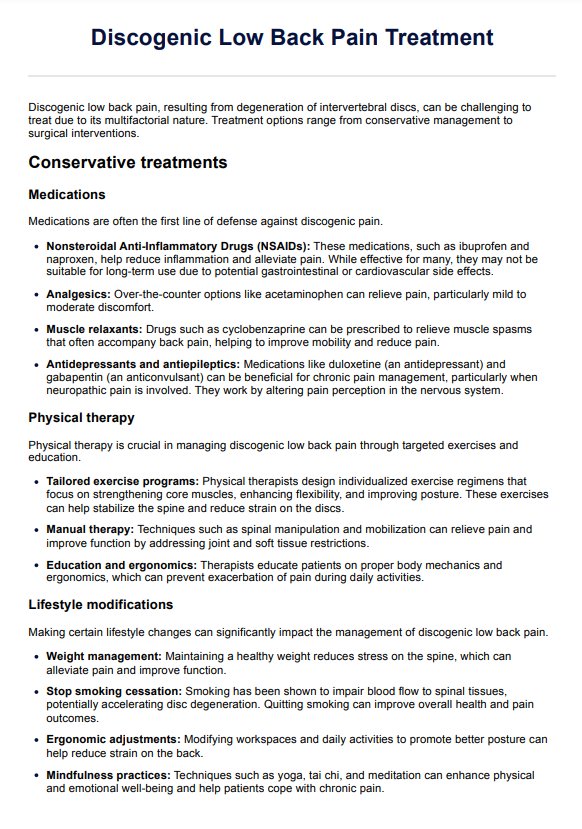Risk factors for discogenic low back pain include aging, physical inactivity, repetitive heavy lifting, smoking, and genetic predisposition to disc degeneration.

Discogenic Low Back Pain Treatment
Explore effective treatments for discogenic low back pain, including physical therapy, medication, and lifestyle changes to enhance pain relief and mobility.
Discogenic Low Back Pain Treatment Template
Commonly asked questions
The duration of discogenic back pain can vary widely. Depending on the severity of leg pain and treatment, it may last for a few weeks or become a chronic condition persisting for months or years.
Treatment for discogenic pain typically includes physical therapy, pain management with medications such as NSAIDs, and lifestyle modifications. In more severe cases, interventional procedures like epidural steroid injections or even surgery may be considered.
EHR and practice management software
Get started for free
*No credit card required
Free
$0/usd
Unlimited clients
Telehealth
1GB of storage
Client portal text
Automated billing and online payments











